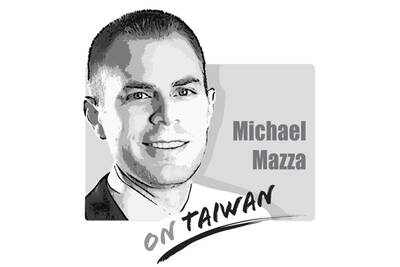Feb. 21 is the UN’s International Mother Language Day. It is a day dedicated to promoting the protection of languages and cultures of smaller peoples and groups around the world. Over the last 60 years, the languages and cultures of Taiwan’s Aborigines, and the Hakka and Hoklo people, which make up 90 percent of Taiwan’s population, have been all but destroyed. The government has never realized that this constitutes human rights abuse.
During the presidential elections, everyone kept talking about “Taiwan,” but after President Ma Ying-jeou (馬英九) was elected president for the first time, the “Taiwan” in “Taiwan Post” was immediately changed back to “Chunghwa.” Immediately after the Jan. 14 elections, the government launched a Chinese Language Knowledge Database and Ma proclaimed that the Chinese writing system had once again been standardized. Why didn’t he say anything about how great the languages of Taiwan are? Preserving Taiwan’s local languages should be a primary task for the government, so why has Ma spent time and effort on standardizing the Chinese written script used by Taiwan and China?
Standardization of script and other items was a measure employed by Qin Shihuang (秦始皇) to cement his control over China. China’s version of the database includes a statement that says its goal is to involve more young people from Taiwan, Hong Kong and Macau, create a more patriotic education and establish a platform for the common spirit of the Chinese people. However, just which country are young people from Taiwan supposed to feel patriotic toward? Surely this database was designed for unification purposes.
Everyone knows that eventual unification is Ma’s ultimate goal. Standardizing the written script, then, is a major part of Ma’s unification policy.
I recently mentioned three things the Ma administration might do. First, I suggested that they would replace the use of the Zhuyin fuhao, or bopomofo, system with China’s Hanyu Pinyin. Second, I said they might promote simplified characters in school alongside traditional characters. Third, I said they might change the English spelling of names on Taiwanese passports to Hanyu Pinyin across the board.
The Presidential Office only responded to one of my concerns, saying they were not going to scrap the Zhuyin fuhao system.
The use of a romanization system representative of Taiwan’s unique qualities is closely related to Taiwan’s sustainable development, but I oppose the use of Hanyu Pinyin. Zhuyin fuhao is a feasible system and it is currently in use. Ma wants standardization and pushes the use of Hanyu Pinyin, which means that he will first have to get rid of the Zhuyin fuhao obstacle.
The Presidential Office only responded to my first proposal. Can we believe what they said? What about my second and third proposals? Will they put these policies into effect? Ma himself has said on TV that he hopes in future Taiwanese students will be taught to read traditional characters and write simplified characters.
What Ma wants is a system in which both traditional and simplified characters are used, but at what cost to Taiwanese? The truth is that Hanyu Pinyin is already widely used around Taiwan and there is nothing we will be able to do about the government changing the English spelling of the names on our passports.
Less than 10 percent of Taiwanese want unification with China, but Ma still sees his historic mission as handing over the free and democratic Taiwan to authoritarian China. This is both worrying and infuriating.
Chuang Wan-shou is an honorary professor at Chang Jung Christian University.
Translated by Drew Cameron

The first Donald Trump term was a boon for Taiwan. The administration regularized the arms sales process and enhanced bilateral ties. Taipei will not be so fortunate the second time around. Given recent events, Taiwan must proceed with the assumption that it cannot count on the United States to defend it — diplomatically or militarily — during the next four years. Early indications suggested otherwise. The nomination of Marco Rubio as US Secretary of State and the appointment of Mike Waltz as the national security advisor, both of whom have expressed full-throated support for Taiwan in the past, raised hopes that
There is nothing the Chinese Nationalist Party (KMT) could do to stop the tsunami-like mass recall campaign. KMT Chairman Eric Chu (朱立倫) reportedly said the party does not exclude the option of conditionally proposing a no-confidence vote against the premier, which the party later denied. Did an “actuary” like Chu finally come around to thinking it should get tough with the ruling party? The KMT says the Democratic Progressive Party (DPP) is leading a minority government with only a 40 percent share of the vote. It has said that the DPP is out of touch with the electorate, has proposed a bloated
Authorities last week revoked the residency permit of a Chinese social media influencer surnamed Liu (劉), better known by her online channel name Yaya in Taiwan (亞亞在台灣), who has more than 440,000 followers online and is living in Taiwan with a marriage-based residency permit, for her “reunification by force” comments. She was asked to leave the country in 10 days. The National Immigration Agency (NIA) on Tuesday last week announced the decision, citing the influencer’s several controversial public comments, including saying that “China does not need any other reason to reunify Taiwan with force” and “why is it [China] hesitant
A media report has suggested that Chinese Nationalist Party (KMT) Chairman Eric Chu (朱立倫) was considering initiating a vote of no confidence in Premier Cho Jung-tai (卓榮泰) in a bid to “bring down the Cabinet.” The KMT has denied that this topic was ever discussed. Why might such a move have even be considered? It would have been absurd if it had seen the light of day — potentially leading to a mass loss of legislative seats for the KMT even without the recall petitions already under way. Today the second phase of the recall movement is to begin — which has